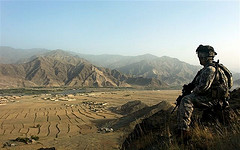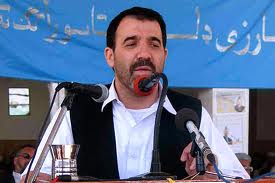
Tweet
Steven Anderson, Brigadier General, Retired, has estimated the costs of air-conditioning U.S. bases in Iraq and Afghanistan to $20.2 Billion. Anderson served as chief logistics officer for General David Petraeus in Iraq.
The amount the U.S. military spends annually on air conditioning in Iraq and Afghanistan: $20.2 billion, according to a former Pentagon official.That’s more than NASA’s budget. It’s more than BP has paid so far for damage from the Gulf oil spill. It’s what the G-8 has pledged to help foster new democracies in Egypt and Tunisia.”When you consider the cost to deliver the fuel to some of the most isolated places in the world — escorting, command and control, medevac support — when you throw all that infrastructure in, we’re talking over $20 billion,” Steven Anderson tells weekends on All Things Considered guest host Rachel Martin. He’s a retired brigadier general who served as chief logistician for Gen. David Petraeus in Iraq. He’s now in the private sector, selling technologies branded as energy-efficient to the Defense Department.
Excerpted from”Among The Costs Of War: Billions A Year In A.C.?”, broadcast June 25th on the weekend edition of All Things Considered:
This is a more complicated because it includes the logistics costs of building roads in order to deliver equipment and fuel. Building and rebuilding road infrastructure, of course, have lasting value apart their use for delivering fuel to U.S. outposts.
Anderson further estimates that 1,000 U.S. troops – excluding private contractors – have been killed guarding fuel convoys.
This is illustrative of the scale of our logistical lines and expenses – and the centrality of energy in military logistics.
What can be done and what could have been done?
Having invested this much in capital and overhead (fuel), and with the future of our engagements in Iraq and Afghanistan uncertain, what can be done. From Among The Costs Of War: Billions A Year In A.C.?”
The 33,000 troops who will return home by the end of next year match the numbers sent to Afghanistan in 2010, at a cost of about $30 billion. That comes out to about $1 million a soldier. But the savings of withdrawing those troops won’t equal out, experts say.
“What history has told us is that you don’t see a proportional decrease in spending based on the number of troops when you draw them down,” says Chris Hellman, a senior research analyst at the National Priorities Project.
“In Afghanistan that’s going to be particularly true because it’s a very difficult and austere environment in which to operate,” he says.
That means most war expenditures lie not in the troops themselves but in the infrastructure that supports them — infrastructure that in some cases will remain in place long after troops are gone.
“We’re building big bases,” American University professor Gordon Adams says, describing the money invested as, in economic terms, “sunk” costs.
“We’re seeing this in Iraq. We’re turning over to the Iraqis — mostly either for a small penny or for free — the infrastructure that we built in Iraq. But we won’t see back any money from that infrastructure.”
General Anderson has proposed what is usually the most efficient initial strategy: “negawatts, which is to say, conserving energy and reconfiguring the U.S. tents to resist heat and thereby use less power in keeping the tents comfortable. Below are images of tents modified with polyurethane to increase their ability to resist heat:

Courtesy Steven Anderson and NPR/All Things Considered (weekend edition).

Courtesy Brig. General Steven Anderson (United States Army, retired) and NPR's All Things Considered (weekend editio).




